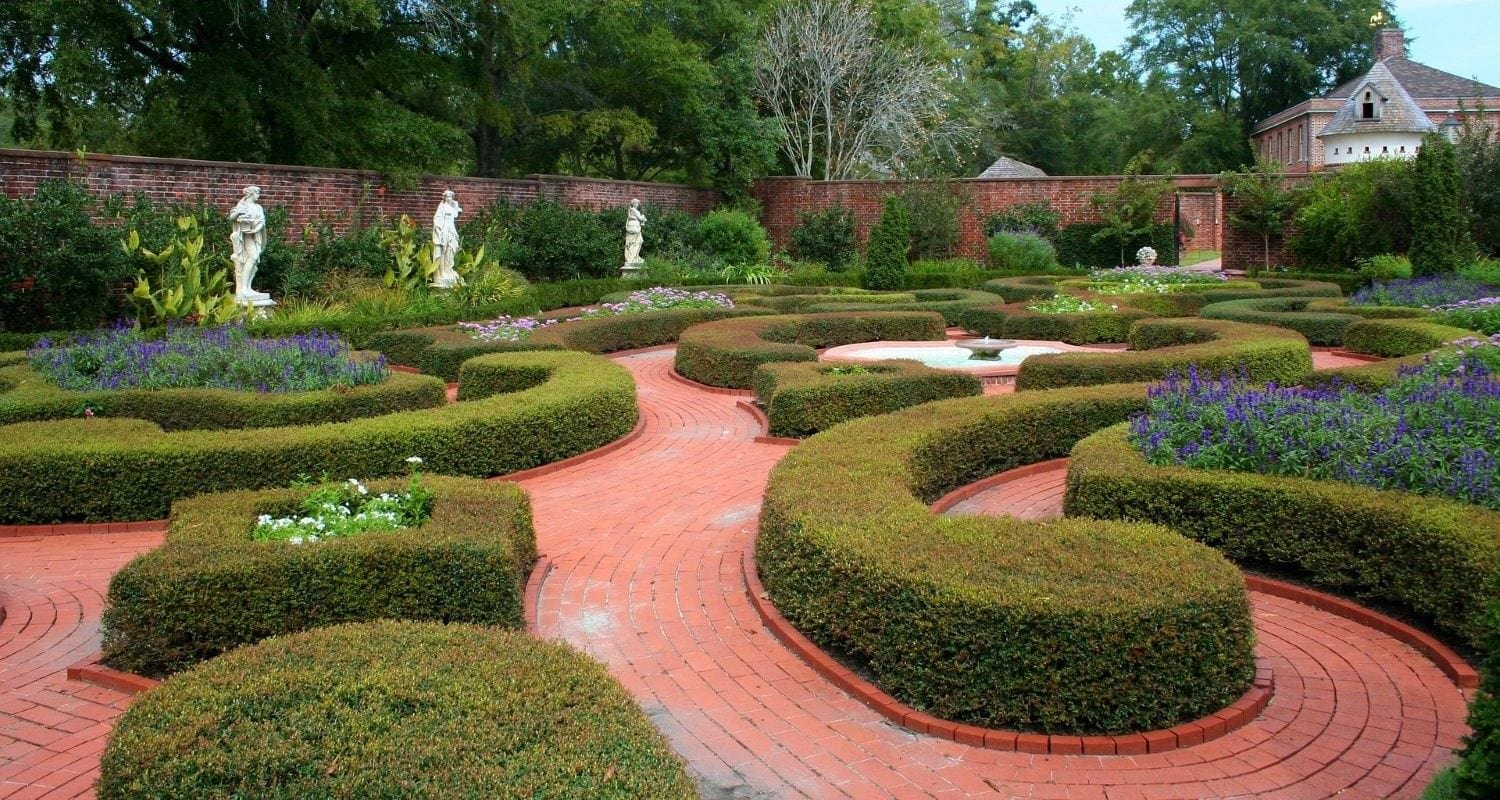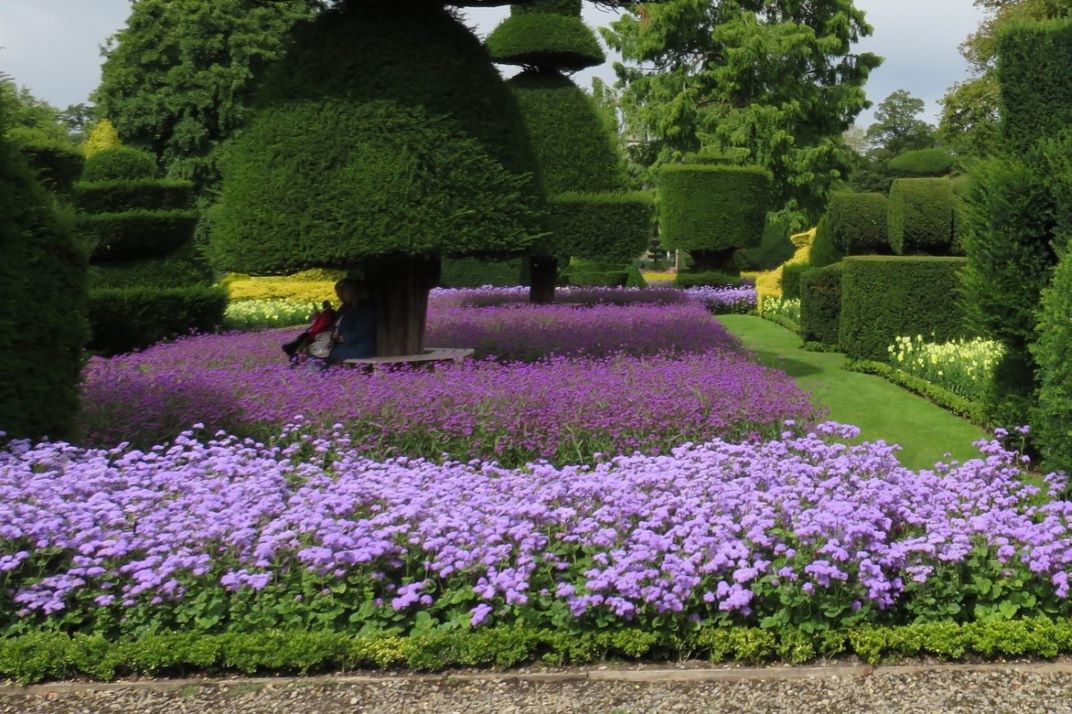Advice & Inspiration
Formal Gardens: Design, Plants & Ideas

Formal garden design is all about balance, symmetry, straight lines and geometric shapes - if you liked maths at school, you’ll love this! Historically the style has been associated with stately homes, palaces and civic gardens, but it’s been increasingly popular with domestic gardeners in recent years and for good reason - there’s just something so pleasing about elegant lines, perfectly designed walkways and beds where everything has a purpose. Evergreens are essential - preferably cut into topiary shapes or neatly clipped - and the colour palette is simple and coordinated.
You can make a formal garden in any space, whether large or small. It can be as minimal as a pair of topiary trees by the front door or a geometrically shaped flower bed. If all around you seems weird and out of control, a formal garden reminds you that there is still order in the world. Read on for our formal garden design ideas, tips and plant suggestions.
Jump to:
Plan your layout
Layout and structure are your starting point - this is pretty much the polar opposite of cottage garden style! You might want to draw this one out on paper or use a design app. Depending on how much space you have to play with, you can include typical formal garden features like wide pathways, seating areas, focal points like a water feature, arbour or statue and geometrically shaped flower beds. Aim to create a sense of journey, with the eye and foot being guided through the garden in the direction you want to go - usually towards the best views or towards your focal point.
Symmetry
Hey, maths fans, over here! Symmetrical design is perhaps the most important part of designing your formal garden. If you’re really clever with it, you can even get it to work in symmetry with the architecture of your home and any existing trees and boundaries. This will create a sense of flow and harmony, as well as making your space look bigger. Many formal gardens have a central pathway with symmetrical and geometrically shaped flower beds or lawns on each side of it, leading to a feature like a seating area - this is also known as a parterre garden. For inspiration, why not visit a garden like Hampton Court Palace or Castle Howard - or check out their websites. Arts and Crafts gardens are also very influenced by the formal style, albeit often with softer planting.
Remember - rules are made for breaking. If you feel like designing an asymmetrical formal garden, go for it!

Hedged in
When you think of a formal garden, it’s probably the neatly clipped, low growing hedges and topiary shapes that you imagine. These provide most of the lines of the garden, by outlining the planting beds. In terms of what hedging to choose, evergreen is essential and buxus is traditional, but there are several good alternatives, such as yew, lime, holly, hornbeam or privet. You’ll need to keep them trimmed quite a bit to maintain their shape and height - up to three times during the growing season.
Topiary
Topiary might seem intimidating, but it doesn’t have to be a full on peacock or bear. You can add a touch of class to your garden with a simple pair of cubes or lollipops at either side of your door or a line of buxus balls in pots. They’re not just for show - these shaped trees and shrubs help to give your garden a three dimensional quality that could otherwise be lacking. If you don’t have the confidence to go freestyle with your topiary, you can buy ready shaped trees or wire frames to clip around if you prefer to grow your own. The most commonly used plants for topiary are the same as those used for the formal hedging - namely box, privet, holly and yew - but you can get creative with herbs like rosemary and lavender too!

Focal points
A focal point at the end of a path or at the point where several paths meet is a must, but it doesn’t have to be a statue of a goddess or an urn! A contemporary sculpture made of willow or wire looks equally impressive - or you could use a water feature, pond or bird bath. I particularly like an arbour with climbing roses or scented honeysuckle growing over it, which if you’re planting roses in your formal beds, would tie the whole look together very effectively.
Trees
When choosing trees for your formal garden, go for those which won’t run wild and spoil your theme - they should be compact, slow growing and easy to prune, with traditional crabapple, quince and ornamental pear fitting the bill nicely. Pleached trees - which have had their lower branches removed to create a raised crown - look great, as do standards in pots.
If you have a wall or fence in your garden, why not tie it into your formal design by training a fruit tree into a beautiful fan or a half standard? Be sure to include some evergreens for year-round appeal.

Just add water
Ponds and lakes in traditional formal gardens usually contain still water to add to the sense of tranquility, but a fountain as a focal point is classy as all get out. Go full stately home with gracefully floating waterlilies and line the edges with marginal plants like irises and bullrushes to encourage birds and dragonflies to your garden - even the smallest pond will attract wildlife.
Coordinated planting
When it comes to choosing flowers, calming and coordinated are your watchwords. The aim is to create a soothing effect with a restricted colour palette - for example blue and white or pink and purple. A single colour in each bed works well too. Many formal gardens stick to one of two flower species such as agapanthus and allium - choose your favourite! Other options include filling the beds with shrub roses (check out RHS Rosemoor for inspiration) or creating an Elizabethan style knot garden by combining flowers with fruit, vegetables and herbs in your beds. Although most formal gardens tend to use a muted pastel colour palette, there’s nothing to stop you bringing the look right up to date and planting bold reds or purples, or going for a hot border of reds, oranges and yellows.




















